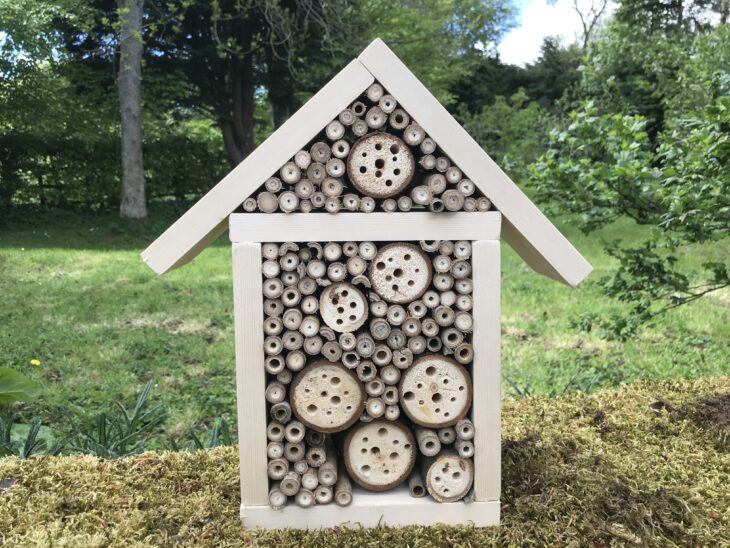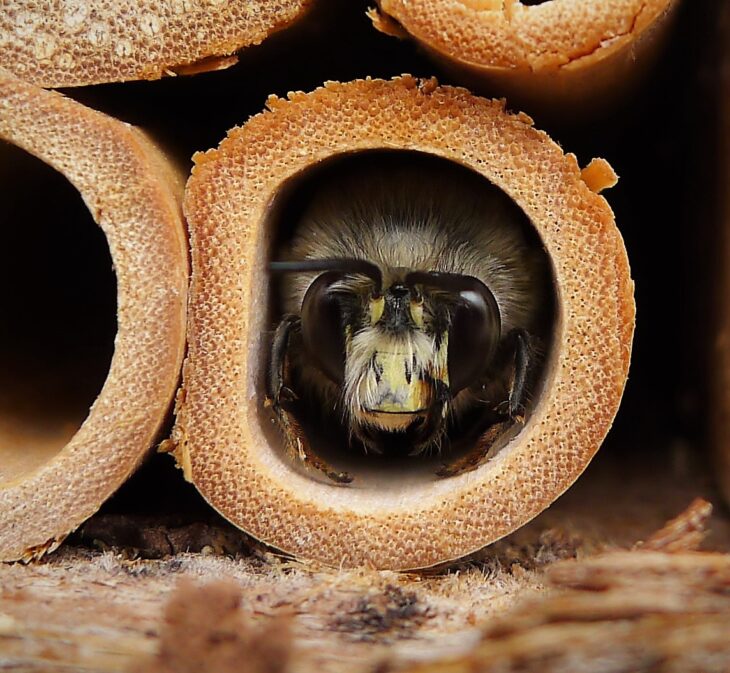Building a bee hotel is an easy and fun way to provide bees and other insects with a safe place to rest and lay their eggs.
There are many different styles and designs of insect hotel, from smaller wall-mounted boxes to large structures built using old pallets. Here, we provide instructions for making a wall-mounted version.

What you will need:
- An untreated wooden plank, at least 10cm wide and a minimum length of 94cm
- Plenty of hollow stems of different diameters (between 2-10mm is ideal)
- Saw
- Drill
- Tape measure
- Screws
- Secateurs
- A fixing to hang the finished bee hotel up
How to make your bee hotel:
- Cut four equal lengths from your plank of wood, at least 15cm long. These pieces will make a basic square frame to hold the hollow stems. The size of your frame is of course up to you and will depend on the length of your plank, as well as the space you have to hang your bee hotel.
- Drill guide holes for the screws (to stop the wood splitting) and assemble the square frame.
- Next, you’re going to need to make an apex roof so that water drains away and doesn’t cause the frame to rot. To do this, cut another two lengths from your plank that are at least 2cm longer than the pieces you used to make the frame.
- Again, drill some guide holes and then screw these two pieces together.
- Lying the frame down flat, position the roof on top of the frame and, where the frame meets the roof, drill another couple of guide holes and then screw together.
- It’s not essential, but you could also add a backing board to your bee hotel if you wanted.
- It’s now time to fill your frame. Using the secateurs or a fine saw, cut your stems into lengths to fit the frame (make them the same width as the plank), discarding any bent or knobbly ones. It’s a good idea to include stems with a range of hole sizes to attract a range of species.
- Lay your frame on a tilted surface and carefully pack it with stems. Only as you add the final few does the whole thing suddenly lock solid.
- Hang your hotel on a sunny wall, sheltered from rain.
What happens next?
Watch as solitary bees investigate your finished bee hotel in the spring. With any luck, the females will lay their eggs inside the stems of your hotel. Each egg is left with a store of pollen for the grub to eat when it hatches. The egg is sealed up behind a plug of mud, in a ‘cell’, and one stem may end up with several ‘cells’ in it. The young bees will emerge the following year.

